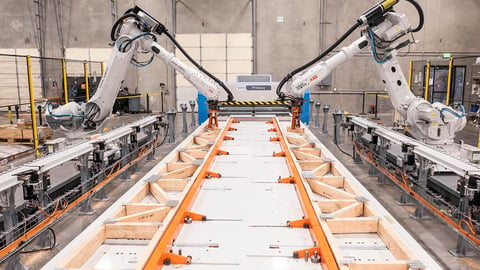Practical use cases for AI in the LBM industry (and beyond)
The future, whether we like it or not, will be heavily influenced by AI.
It’s an increasingly big deal in the present, too. But how are your competitors using AI and other emerging trends of advanced tech? Whether your focus is on hardware, building supplies, lumber or retail (or some combination thereof), there are plenty of use cases to consider. Read on to review a handful of practical, specific examples below.
How companies are using AI
Tractor Supply is betting big on AI, per American Public University, to streamline its processes in supply chain, HR, sales and marketing. In the aisles, it’s all about improving customer service. American Public University explains:
“Tractor Supply uses an AI-powered tech assistant known as ‘Gura,’ which stands for great, uncover, recommend, and ask. Any store associate can use this tool to bring high-quality service to customers.
For example, imagine that a customer wants to find a type of dog food that helps with sensitive skin. A store associate can then use Gura to determine which foods would be the best fit for the customer, as well as find the inventory levels and price for a type of food in real time.”
The website DigitalDefynd (DD) offers a slew of more examples of AI at work in the world of lumber, including the implementation of predictive maintenance and equipment optimization. It presents an example of a large sawmill using software that works in conjunction with its machinery. It sums up the sawmill’s AI use:
“The system analyzed data from vibration sensors and detected early signs of motor bearing failure in their planing mill. The predictive alerts allowed the maintenance team to replace the faulty bearings over a scheduled weekend, preventing a major breakdown that could have disrupted production for several days.”
AI is also being used for quality control, defect detection and waste reduction. DD cites a furniture manufacturer using “an AI-based visual inspection system to analyze wood panels before assembling them into tables and chairs. The system flagged defective panels ... As a result, the company reduced customer returns by 15% and saved material costs by recycling substandard panels for less critical uses.”
Meanwhile, a veneer manufacturer cut production waste by 25% after implementing an AI-based cutting system.
Supply chain optimization, drones and more
DD offers more real-world use cases for AI.
Streamlining the supply chain. Per DD, a timber company used “an AI-driven platform that monitored historical and real-time data like international demand, shipping delays and weather patterns. The system identified upcoming port congestion and rerouted shipments to less crowded terminals, reducing transportation costs by 10% while maintaining on-time delivery for global clients.”
Production line automation. AI is increasingly being used to power autonomous robots and trucks, which can boost efficiency. DD cites a case of a plywood manufacturer boosting productivity by 20% after rolling out autonomous guided vehicles.
Forest management and resource allocation. According to DD, a forest management firm deployed “drones equipped with AI-enabled cameras to … identify tree health by analyzing foliage color, growth patterns and soil conditions.” The data was used to identify the best areas for logging and also for reforestation efforts.
Customization and product design. AI can incorporate customer feedback and monitor key trends to point toward what consumers like. Consider this example of a furniture company: “With machine learning algorithms, they created modular sofa designs that catered to varying space constraints and style preferences. This approach allowed customers to customize their furniture, which increased the company’s conversion rate by 30% and reduced overproduction of unpopular models.”
Energy management and efficiency. According to DD, a Scandinavian wood processing facility reduced energy consumption by 15% by using AI-powered technology to “adjust drying temperatures and airflow based on production schedules and weather data.”
Predictive demand forecasting. AI forecasting systems enabled a wood products manufacturer to anticipate increased decking materials demand, which “allowed the company to adjust production schedules and stockpile enough inventory, reducing stockouts and fulfilling 95% of customer orders.”
Employee safety and training. At wood mills and lumber yards, AI can help detect when workers forget to wear safety gear and can even help detect worker fatigue for those operating heavy or dangerous machinery.




